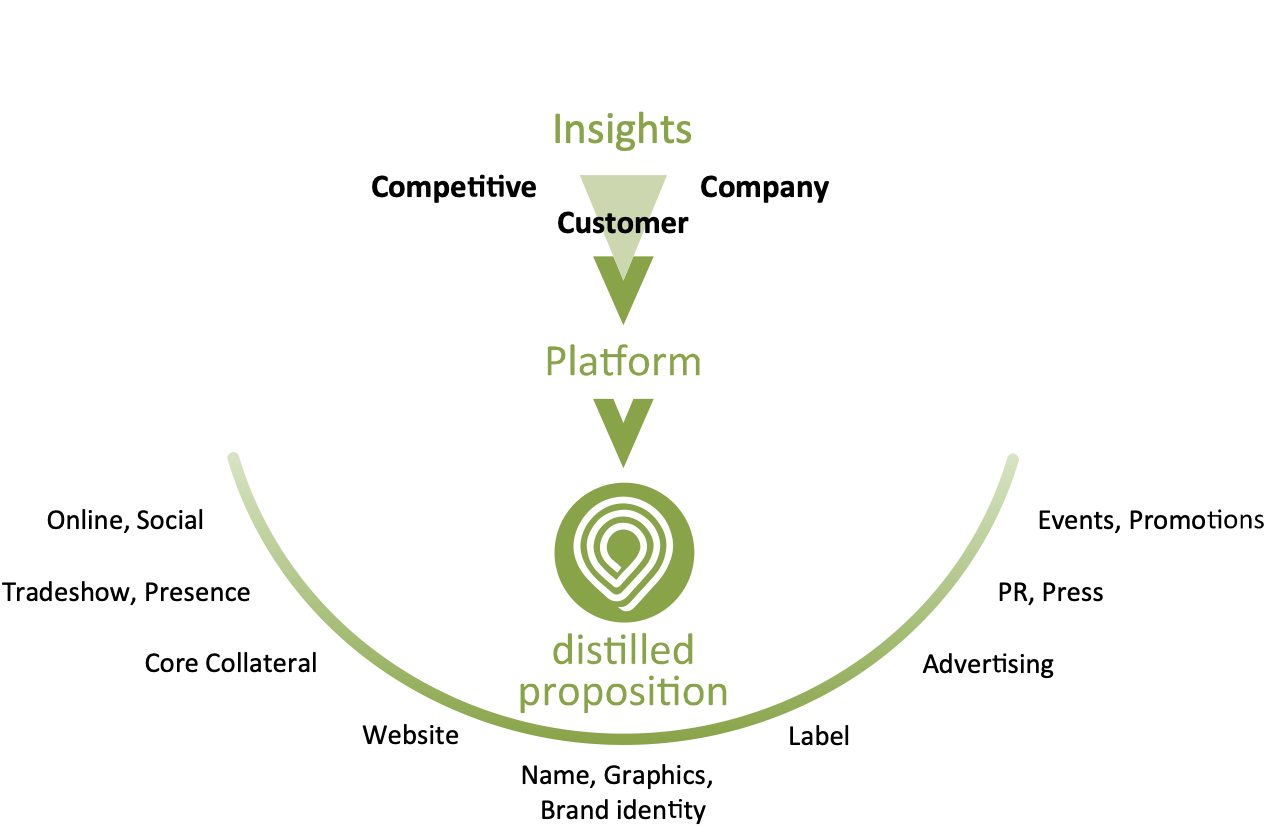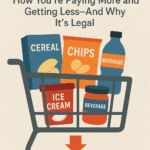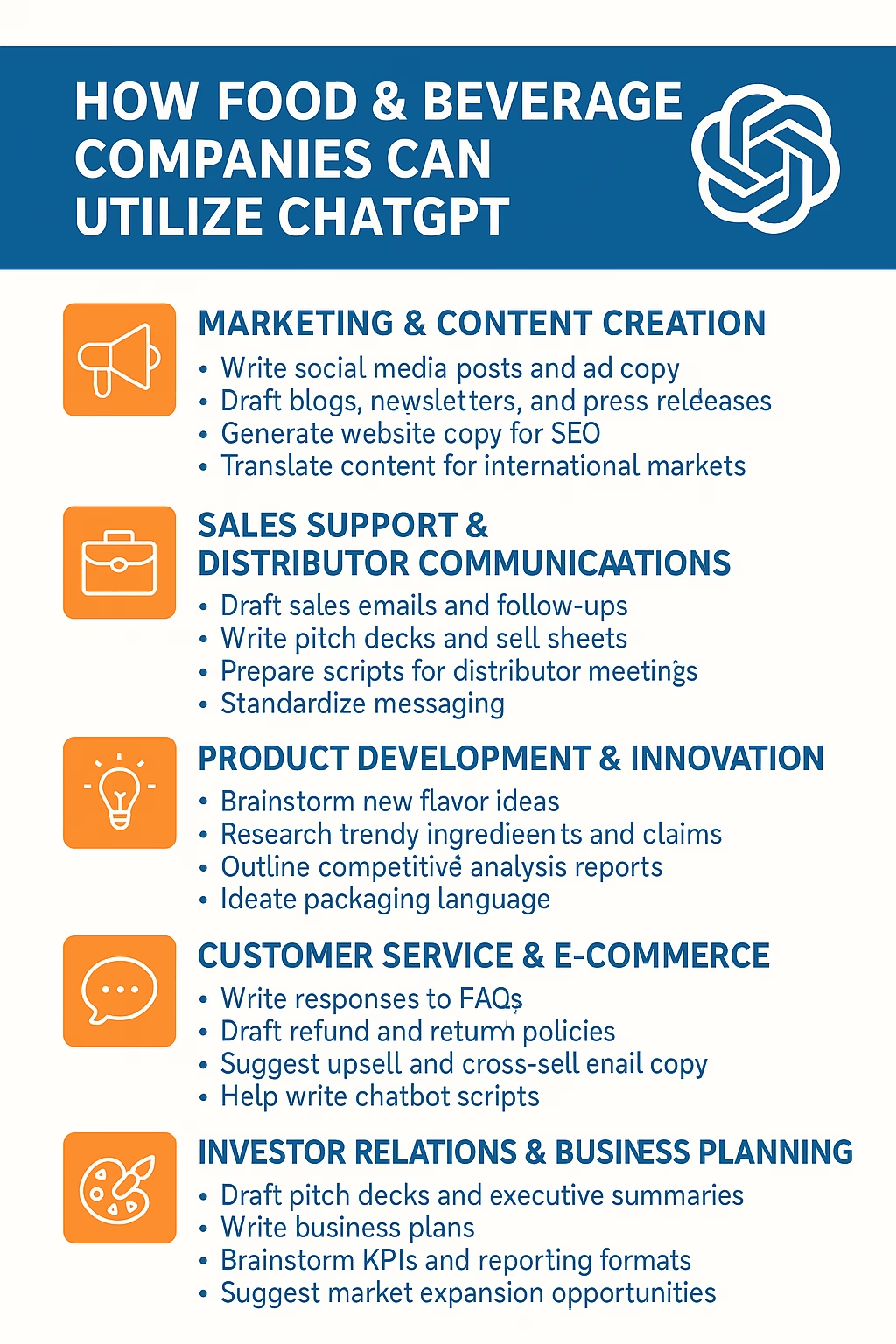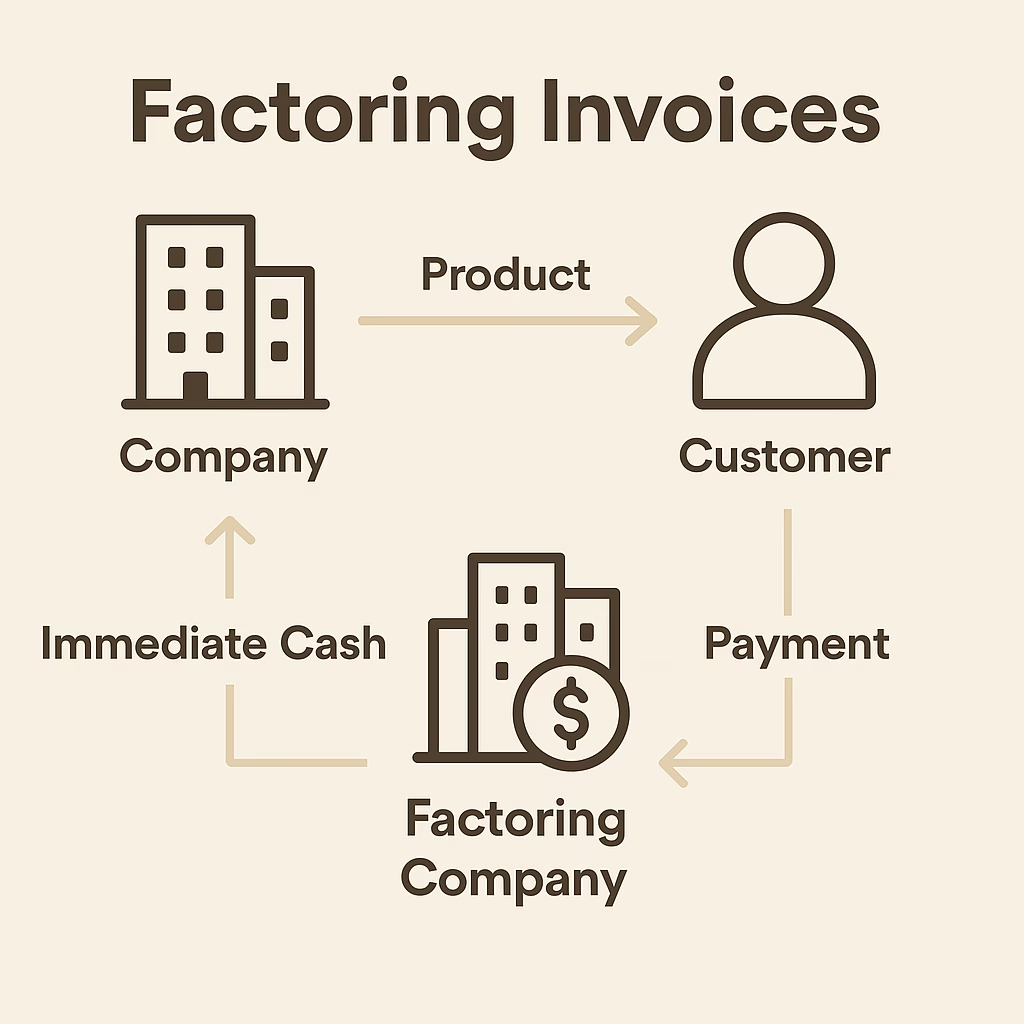Open a bag of chips, unbox a frozen lasagna, or unwrap your favorite ice cream bar today, and you might…
How Iconic Brands Are Built: A Deep Dive into Strategic Branding
This roadmap serves as a strategic compass for anyone building a brand—from early-stage entrepreneurs to CMOs at global companies. Follow it, and your brand will resonate where it matters most: in the hearts and lives of real people.
Great brands aren’t born in boardrooms. They’re forged in the real lives of consumers. From Nike to Naked Juice, the most enduring companies don’t just sell products—they embody beliefs, live their values, and connect emotionally. This article explores the essential frameworks of strategic branding to show how brands are truly built to last.
I. Discovery: Real Lives, Real Insight
Brand Fit Follows Consumer Truth
Too many marketing teams start with: “Here’s our brand—now let’s find people who’ll want it.” That’s backwards.
We start with: “Whose life are we trying to fit into—and what does that life look like?” Only once we understand the values, habits, and decision-drivers of that life do we explore how a brand can fit in naturally.
Think about Gatorade. It wasn’t built on a vague hydration claim. It was built by understanding athletes and their needs during recovery. Everything from the product format to the iconic “sweat like a pro” advertising came from that deep lifestyle understanding.
This is why our discovery process begins with human lives, not brand decks.
Apple doesn’t market processor speeds. It markets creativity and simplicity. Nike doesn’t sell footwear. It sells the spirit of determination. These brands understand the truth: emotion drives motion.
Start with Emotional Insight
Emotions make people choose. Even in rational categories like toothpaste, insurance, or bottled water, emotion wins. In 2009, Tropicana redesigned its packaging, removing the familiar orange with a straw. Sales dropped nearly 20%. Why? They erased a nostalgic cue that conveyed freshness and trust.
Lead with Human Truth, Not Product Decks
Too many marketers ask: “Here’s our brand. Who might want it?” Great brands flip that: “Whose life are we trying to fit into—and what does that life actually look like?”
Take Gatorade. It wasn’t born from a generic hydration claim. It emerged from deep insight into athlete recovery. Its format, flavor, and iconic sweat-drenched ads all flowed from that real human need.
II. Insight Gathering: What Shapes the Brand
Insights shouldn’t only come from outside the walls of your business. While understanding consumers is essential, some of the richest information often comes from inside your organization. Employees—especially those in sales, operations, and customer service—have firsthand knowledge of what’s working, what competitors are doing, and where your category is headed. Their proximity to the day-to-day also gives them a clear view of the emotional, logistical, and relational drivers behind purchase behavior.
Equally valuable are conversations with your customers—retailers, distributors, and foodservice operators. These partners are often the first to spot trends, identify gaps on shelves, and observe consumer behavior across brands. Their perspective is gold and should be treated as a core input to your insight process.
Research That Respects Context
Forget sterile focus groups. Conduct interviews in kitchens, gyms, dorms, yoga studios—places where people live real lives. Why? Because authentic insights don’t happen under fluorescent lights.
Example: A hydration brand repositioned itself after hearing a woman at a yoga studio say, “I don’t drink brands that feel too engineered.” That single insight shifted the brand’s tone from science-heavy to holistic and feel-good.
Get the Right Respondents
Structured Exploration, Human Discovery
Once we understand the life, we explore how your category and brand fit into it:
- How does the category show up in their daily routines?
- Are they satisfied with what’s available?
- What frustrates them?
- What makes one brand feel better than another?
- Which ones feel “on the rise” or “right for me”?
- What subconscious filters are they using when deciding what to buy?
Then we move to your brand:
- What’s the top-of-mind reaction?
- What occasions does your brand feel perfect for? Which feel like a stretch?
- What emotional need does your brand fulfill?
- What would need to change to make them choose your brand more often?
- What adjectives consistently surface when your brand is mentioned?
Take Disney. It doesn’t sell movies. It sells magic, wonder, and family connection. That’s why every touchpoint—theme parks, movies, merchandise—feels cohesive. The brand insight that drives it all? “Create happiness through magical experiences.” That didn’t come from a spreadsheet. It came from watching families light up during shared experiences.
Targeting energy drinks? Don’t talk to casual gym-goers. Talk to BASE jumpers and parkour athletes. Precision matters. For a children’s snack, the team interviewed moms juggling school drop-off and full-time work—not just any parent, but the ones living daily chaos.
III. Platform Development: Turning Insight into Structure
The journey from consumer understanding to brand communication isn’t random—it’s structured. The enhanced Arena Partners marketing wheel we use visually captures the flow from raw insight to a sharp, distilled brand proposition, forming the core of all downstream marketing. Let’s break it down in depth:
Insights → Platform → Distilled Proposition
- INSIGHTS The process starts with deep, real-world understanding—of lives, categories, and emotional motivators. Not just what people buy, but why they buy, how they feel, what they crave, and what they reject.These insights ideally come from multiple sources:
- Target consumers, through ethnographic research, interviews, and observation.
- Employees, especially those in customer-facing roles, who see competitor actions and understand friction points firsthand.
- Retailers and distributors, who interact daily with your product in the real-world market and see how it stacks up on shelves and in consumer carts.
- When Tropicana removed the straw-in-orange icon from its packaging, it disregarded a visual symbol tied to emotional trust and familiarity. The result? A 20% drop in sales. Insight isn’t just data—it’s decoding meaning.
- Gatorade was never just about hydration. It understood recovery and the identity of athletes—what it means to “sweat like a pro.” That insight shaped product formats, language, and its iconic marketing voice.
- Cactus Water succeeded by tapping into an emotional, nature-connected narrative—”the plant that survives the desert can hydrate you, too.”
- Nike built its brand not just by analyzing performance data, but by deeply understanding athletes’ internal drive—channeling that into its iconic “Just Do It” ethos.
- Disney pays close attention to both park guests and frontline cast members, mining their feedback to uncover the emotional nuances that make experiences feel magical and memorable.
- Netflix identified the cultural desire for on-demand, binge-worthy content, then married that with a bold internal culture of creativity, speed, and freedom—allowing them to move quickly on original programming that resonates.
- Amazon scaled not just through logistics but through deep insight into what customers value most: convenience, trust, and fast access. That insight underpins everything from Prime to the layout of the website to the tone of customer emails.
- PLATFORM Once insights are gathered, we shape the brand platform—the foundation of your brand’s personality, tone, and promise. This includes:
- Brand values
- Emotional benefit
- Functional benefit
- Proof points
- Voice and visual expression
- Apple’s platform is anchored in simplicity, creativity, and intuition. Every design, ad, and keynote reinforces that.
- Patagonia’s platform is built on environmental stewardship and activism. Their tone, imagery, and even product repair policies support that belief.
- DISTILLED PROPOSITION
From the brand platform, we create the distilled proposition—the sharp, memorable idea that consumers will remember and repeat. This isn’t a tagline. It’s the core truth that animates all messaging.
Examples:
- Nike: Just Do It. Stemming from a brand platform centered on empowerment, personal achievement, and athletic drive, Nike’s distilled proposition became a universal call to action.
- Disney: Happiness through magical experiences. Their platform focused on imagination, family connection, and immersive storytelling—resulting in a proposition that resonates across films, parks, and products.
- Amazon: Customer obsession at scale. Their platform emphasizes speed, convenience, and customer-first thinking, which distilled into a proposition promising unmatched service and access.
- LEGO: Rebuild the World. With a platform built on creativity, learning through play, and imaginative freedom, LEGO’s proposition inspires children and adults alike to engage with endless possibilities.
- Spotify: Music for every moment. Based on a platform that values personalization, emotional connection to music, and discovery, Spotify’s proposition made it the go-to companion for daily life.
- Patagonia: We’re in business to save our home planet. Rooted in a brand platform of environmental activism and quality over fashion, Patagonia’s proposition is both mission and message.
- Coca-Cola: Open Happiness. Emerging from a platform of joy, optimism, and connection, this distilled idea touches every part of Coca-Cola’s global experience.
Here’s how Coca-Cola’s distilled proposition—Open Happiness—acts as both a filter and a beacon for the brand:
Things That Fit:
- Feel-good storytelling campaigns: For example, the “Share a Coke” campaign labeled bottles with people’s names, encouraging emotional connection and joy.
- Seasonal brand traditions: Coca-Cola’s beloved holiday ads with Santa Claus and the polar bears reinforce warmth, nostalgia, and family togetherness.
- Sponsorships and events: Music festivals, World Cup celebrations, and Olympic campaigns that bring people together in moments of shared joy.
- Colorful, celebratory packaging: Limited-edition cans for Pride, Lunar New Year, or Olympics that reflect collective happiness.
Things That Do Not Fit:
- Guilt-based health warnings: Campaigns emphasizing grams of sugar or weight loss undermine the emotional promise of happiness.
- Aggressive or sarcastic competitive ads: Negative messaging contradicts Coca-Cola’s optimistic and unifying tone.
- Luxury lifestyle advertising: Positioning Coke as a premium or elite beverage distances it from its core truth of accessibility and universal joy.
- Dry, functional claims: Messaging like “hydrates 30% faster” belongs to performance brands—not one built around moments of delight.
In short, if an idea doesn’t evoke, reinforce, or deliver happiness, Coca-Cola shouldn’t be doing it. That’s the discipline of staying anchored to a distilled proposition.
- Slack: Where Work Happens. Built from a platform of clarity, alignment, and user-centric design, Slack positioned itself as more than a chat tool—it became the digital office.
- Airbnb: Belong Anywhere. Starting from the platform of belonging, accessibility, and authentic travel, Airbnb’s distilled proposition reshaped what hospitality means.
- Dove: Real Beauty. From a platform rooted in body positivity and emotional empowerment, Dove challenged industry norms and made their proposition a movement.For new or emerging brands, a distilled proposition could look like this:For busy professionals who crave mental clarity without caffeine crashes, [Brand] delivers natural alertness through clean, botanical blends—because we believe focus should come without compromise.When the distilled proposition is right, it becomes the magnetic center of your brand’s universe—guiding advertising, packaging, social content, retailer decks, and even investor pitches.
Brand Strategy Begins Here
When we’re done, what you get isn’t just research. It’s the foundation of your brand platform:
- A clear, emotional idea that organizes everything else
- Messaging pillars that reflect how people actually talk
- Audience profiles grounded in reality—not fiction
- Packaging language, claims, and visuals that resonate
- A roadmap for PR, digital, advertising, and retail execution
In short: A brand that’s built to live where people actually live, not just where we wish they did.
Every brand needs a tight positioning statement. Here’s the proven structure:
For (target) who (need), (brand) provides (benefit) because (reason to believe).
Example:
- For 18–34-year-olds who regularly consume plant-based beverages, ¡Cactus! Organic Cactus Water provides breakthrough hydration because it embodies nature’s way to hydrate in the hottest and driest environment.
- For travelers seeking enriching, local experiences over generic hotels, Airbnb provides authentic accommodations because it connects guests directly with real homes and real communities.
- For people who want the best streaming experience without traditional TV restrictions, Netflix delivers unlimited, on-demand entertainment because it invests heavily in original content and personalized recommendations.
- For families looking to create unforgettable memories together, Disney Parks offer magical experiences because every detail—from staff to storytelling—is designed to bring dreams to life.
- For busy professionals who value efficient shopping, Amazon Prime provides fast, free delivery and seamless convenience because it’s backed by a global logistics network and a relentless focus on customer experience.
IV. Internal Alignment: Culture as Brand Fuel
To create a brand that resonates externally, you must first build a belief system internally. The most powerful branding doesn’t start with a logo or a campaign—it starts with culture. A cohesive internal culture becomes the living, breathing expression of your brand promise, creating consistency from the inside out.
Behind every great brand is a culture that reflects the brand promise internally before it’s ever communicated externally. Your brand isn’t just what consumers experience—it’s what employees live. Culture shapes how marketing is executed, how service is delivered, and how consistently the brand shows up in the world. Your brand is what people say about you when you’re not in the room—and your employees are the ones repeating it the most.
Cult-Like Culture Drives Performance
Iconic companies build emotionally committed cultures:
- Apple creates elite innovation tribes.
- Starbucks builds emotional connection through daily rituals and purpose.
- Chick-fil-A fosters a service-first, values-based culture that drives loyalty from both customers and employees.
- Amazon fosters a culture of relentless customer obsession and operational excellence, empowering teams to innovate rapidly and stay focused on long-term impact.
- Netflix prioritizes a culture of freedom and responsibility, trusting employees to make bold decisions and align with the brand’s ethos of original thinking and excellence in storytelling.
This culture comes from:
- Clear vision repeated endlessly
- Leaders who walk the talk
- Emotional ownership among employees
If your culture says one thing but leadership behaves differently? You don’t have a culture. You have branding.
V. Activation: Executing with Precision
A great brand is not a campaign—it’s a system. And at the very center of that system is the distilled proposition. This single, focused idea must act as the organizing force for every decision, design, and interaction in the brand’s ecosystem.
Referencing the Cascadia Managing Brands Marketing Wheel, everything radiates out from this core: your advertising, packaging, website, social media, sales decks, even how your customer service team answers the phone. If what you’re doing doesn’t align with the distilled proposition, it must be rethought or removed. It is not a suggestion. It is the standard.
When the distilled proposition is done right:
- Advertising echoes its voice.
- Design supports its emotion.
- Social content tells stories that reinforce it.
- Sales strategy articulates it clearly to retailers and partners.
- Culture and hiring uphold it internally.
For example:
- Dove doesn’t market just lotion. It markets confidence and real beauty across all touchpoints, because its proposition demands it.
- Spotify doesn’t push playlists—it delivers music for every moment, consistently reflected in its personalized content, app UI, and campaign tone.
The distilled proposition must serve as the litmus test for everything. If it’s off-brand, it’s off-strategy.
This is how the best brands maintain consistency, clarity, and connection in a chaotic world: they start with a sharp emotional insight, shape it into a platform, focus it into a distilled proposition—and then let it guide everything they do.
- Start with Lives, Not Decks – Begin by immersing yourself in the lived experience of your audience. Ethnographic interviews, day-in-the-life studies, retailer and distributor input, and frontline employee feedback all shape your foundational insight. Your goal is not just demographic data, but emotional context.
- Extract Emotional Truth – Don’t stop at function. Understand what your consumer feels—what they fear, aspire to, laugh at, crave, and reject. It’s not about your product. It’s about how your product fits into a feeling. Gatorade isn’t just hydration; it’s identity. Apple isn’t just devices; it’s creative empowerment.
- Craft a Focused Proposition – Use insights to define your brand platform and distilled proposition. Ensure your messaging connects instantly. The best propositions are sticky, repeatable, and aligned with human truth. Think: “Just Do It,” “Belong Anywhere,” or “We’re in business to save our home planet.”
- Align Your Team – Culture is strategy in motion. Create internal alignment around your brand platform. When your team believes in the mission and lives the values, your brand becomes consistent, authentic, and durable across every channel.
- Live Your Values Out Loud – From frontline employees to C-suite leadership, every interaction and decision should echo your brand’s emotional core. Starbucks doesn’t just serve coffee; it nurtures connection. Netflix doesn’t just stream shows; it champions freedom and originality.
The most iconic brands—from Nike to Dove—operate like living organisms. They evolve, but they always reflect the emotional insight that gave them life. Your job is to build a system where every part—research, messaging, design, internal culture, and external expression—flows from one unshakable truth.
This is how you build a brand that people don’t just buy—they believe in.
This Is How Brands Are Built
Not with luck. Not with budget alone. But with clarity, empathy, structure, and emotional precision.
It’s how Nike motivates. How Apple simplifies. How Gatorade fuels. And how your brand can grow into something timeless—not just purchased, but believed in.






